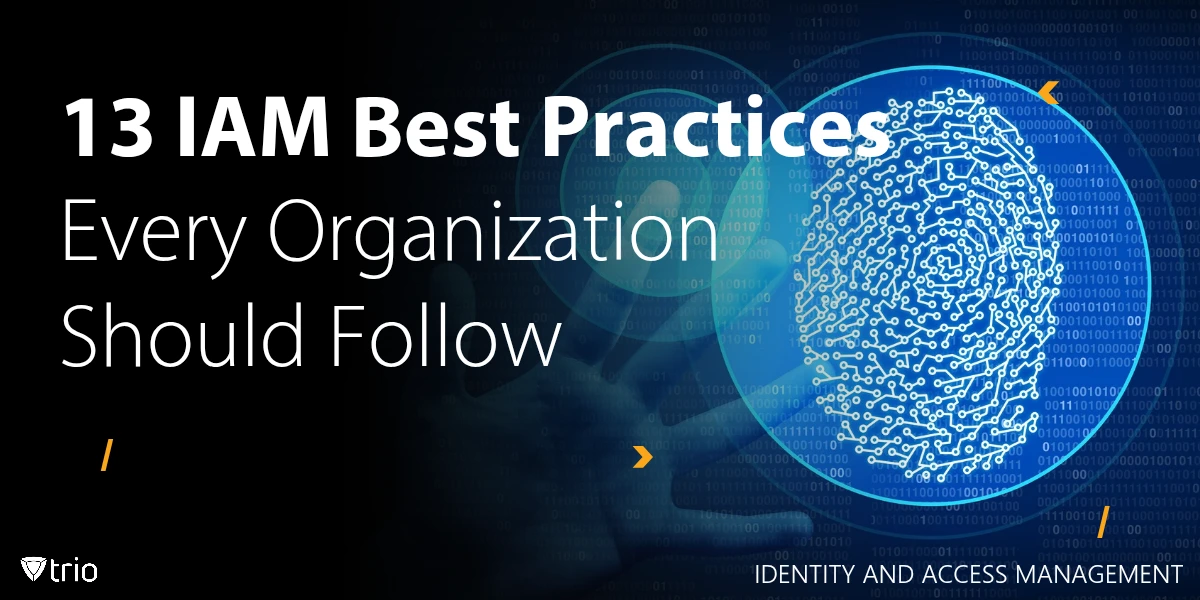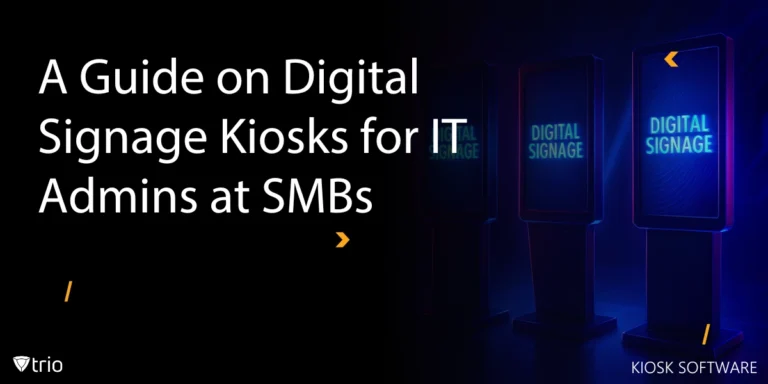In today’s mobile-first world, small and midsize businesses (SMBs) face an ever-growing landscape of identity and access challenges. Employees access corporate resources from smartphones, tablets, and laptops—sometimes outside the safety of your network. Add to that remote and hybrid work models, and you have a recipe for potential security gaps. By adopting robust Identity and Access Management (IAM) practices—and tightly integrating them with Mobile Device Management (MDM) or Unified Endpoint Management (UEM)—you can enforce consistent policies, streamline user lifecycles, and reduce risk across all endpoints. Below are the thirteen IAM best practices every SMB should implement to safeguard their data, devices, and reputation.
1. Adopt a Zero Trust Framework
Zero Trust shifts your security posture from “trusting by default” to “never trust, always verify.” Under Zero Trust:
- Every access request (from any device or location) is authenticated, authorized, and encrypted.
- Continuous monitoring and risk assessment determine whether to grant or revoke access in real time.
Why it matters for SMBs:
Zero Trust stops lateral movement by attackers. When paired with your UEM, device posture—such as OS version, encryption status, and compliance settings—becomes an input to access decisions. For example, only devices that meet your encryption and patch-level criteria can connect to sensitive resources.
2. Enforce Multi-Factor Authentication (MFA)
Passwords alone are no longer sufficient. MFA requires users to present two or more verification factors—something they know (password), have (mobile authenticator), or are (biometrics).
MDM/UEM integration tip:
Use your UEM’s capability to push and enforce authenticator apps or hardware tokens to managed devices. You can even block network access for devices without an approved MFA method installed.
3. Implement Role-Based Access Control (RBAC)
RBAC ensures users only have the permissions necessary for their job functions:
- Define Roles (e.g., Sales, HR, IT Admin)
- Assign Permissions (file shares, apps, network segments) per role
- Map Users to roles, not individual permissions
SMB benefit:
RBAC reduces permission sprawl and administrative overhead. When combined with UEM, you can dynamically assign device configuration profiles—for instance, shipping sales reps devices pre-configured with CRM apps and VPN settings.
4. Enforce the Principle of Least Privilege
Least Privilege means users and devices get the minimum access they need to perform tasks:
- Regularly review and revoke unnecessary permissions.
- Use just-in-time (JIT) access for admin roles, granting elevated privileges only for short time windows.
Device angle:
Your UEM can enforce “work profiles” or containerization, isolating corporate data and preventing apps outside your policy from accessing sensitive resources.
5. Automate User Provisioning & Deprovisioning
Manual on- and off-boarding is error-prone. Automate these workflows:
- Provisioning:
- Automatically enroll new hires in your UEM and identity platform.
- Push device certificates, Wi-Fi/VPN profiles, and application catalogs upon enrollment.
- Deprovisioning:
- Instantly revoke network and app access when an employee leaves.
- Remotely wipe or retire devices from the UEM console.
Why automation matters:
Reduces “orphaned” accounts and devices that can be exploited if left unmanaged.

6. Leverage Single Sign-On (SSO)
SSO provides a seamless user experience and reduces password fatigue by allowing one set of credentials to access multiple applications.
- Integrate your identity provider with cloud and on-prem apps.
- Use the UEM to deploy pre-configured SSO apps to endpoints.
Security plus:
SSO coupled with conditional access policies (device compliance checks via UEM) ensures only healthy endpoints can gain entry.
7. Enforce Strong Password & Passcode Policies
Complex, unique passwords and device passcodes are your first line of defense:
- Password Policies: Minimum length, complexity requirements, and regular rotations.
- Mobile Passcodes: Enforce PIN or biometric unlock, with automatic device lock after inactivity.
UEM role:
Use your UEM to push and enforce passcode policies, disable simple PINs, and require auto-wipe after a number of failed attempts.
8. Monitor & Audit Access Continuously
Visibility is critical for detecting anomalous behavior:
- Enable detailed logging of sign-in events, policy changes, and privilege elevations.
- Centralize logs in a SIEM or analytics platform.
- Schedule regular access reviews to confirm permissions align with business needs.
UEM monitoring:
Track device inventory, compliance status, and app installations. Correlate these logs with your identity platform to spot compromised or rogue devices.
9. Integrate IAM with MDM/UEM for Conditional Access
Combine identity signals (user, location, risk level) with device posture:
- Block or limit access from jailbroken or rooted devices.
- Deny access if device encryption is disabled, OS is outdated, or security patches are missing.
- Provide read-only access for devices that aren’t fully compliant.
Result:
Risk-based conditional access ensures sensitive data stays protected, even if user credentials are stolen.
10. Educate & Train Your Workforce
Technology alone can’t secure your business—people play a pivotal role:
- Conduct regular security awareness training covering phishing, social engineering, and device hygiene.
- Reinforce best practices through simulated phishing campaigns and quizzes.
- Provide clear guidelines on reporting lost/stolen devices.
Best practice:
Combine your UEM’s ability to detect lost or compromised devices with an employee self-service portal, so users can quickly lock or wipe devices on their own.

11. Secure Service Accounts & API Keys
Service accounts and machine-to-machine identities often possess broad privileges:
- Store credentials in a centralized secrets vault (e.g., HashiCorp Vault).
- Enforce automated rotation of keys and certificates.
- Monitor usage patterns and set alerts for anomalous API calls.
UEM integration:
Use your UEM to manage certificates on devices and ensure that service accounts, such as IoT sensors or integration endpoints, only run on compliant, managed devices.
12. Conduct Regular IAM Policy Reviews
Security requirements and business roles evolve over time. Schedule periodic audits to:
- Reconcile user roles, group memberships, and permissions.
- Identify and remove dormant or orphaned accounts.
- Validate that MFA and password policies remain aligned with threat trends.
Device-driven insight:
Leverage UEM reports on inactive or decommissioned devices to flag associated identities for review and cleanup.
13. Plan for Disaster Recovery & Incident Response
Prepare for the worst with a documented, practiced plan:
- Define IAM-specific playbooks for compromised credentials, lost devices, or a breached identity provider.
- Pre-authorize emergency-access accounts for key IT personnel.
- Use your UEM to rapidly isolate or wipe affected endpoints in the event of a breach.
Why it’s critical:
An orchestrated incident response—spanning identity and device management—can shrink breach containment times from days to minutes.
Conclusion
By embedding these thirteen IAM best practices into your security strategy (and tightly integrating them with a modern UEM platform), you’ll dramatically reduce your SMB’s attack surface, simplify compliance, and ensure users can work safely from any device.
Ready to fortify your identity and device management?
Take control of access, enforce consistent policies, and secure your mobile fleet with Trio UEM. Start your free trial today or book a personalized demo to see how easy it is to put these IAM best practices into action.
Frequently Asked Questions
The four pillars are
- Authentication (MFA/biometrics)
- Authorization (RBAC/least privilege)
- Auditing (continuous access monitoring)
- Automation (user provisioning/deprovisioning)
For SMBs, integrating these with a UEM like Trio ensures devices comply with IAM policies automatically.
Zero Trust uses device posture (from your UEM) as an access requirement. For example, Trio UEM can block logins from non-compliant devices (outdated OS, disabled encryption) even with valid credentials, stopping breaches before they start.
30% of SMB breaches stem from orphaned accounts. Automated offboarding via tools like Trio UEM instantly revokes access and wipes corporate data from devices, eliminating this risk.
No—IAM controls who accesses resources, while MDM/UEM (like Trio) manages how devices meet security standards. Together, they enforce conditional access (e.g., “Sales team can only access CRM apps on encrypted devices”).
A unified platform like Trio UEM combines IAM and device management, automating 80% of these practices (MFA enforcement, RBAC, patch compliance) out of the box. Start a free trial to deploy in days, not months.
Get Ahead of the Curve
Every organization today needs a solution to automate time-consuming tasks and strengthen security.
Without the right tools, manual processes drain resources and leave gaps in protection. Trio MDM is designed to solve this problem, automating key tasks, boosting security, and ensuring compliance with ease.
Don't let inefficiencies hold you back. Learn how Trio MDM can revolutionize your IT operations or request a free trial today!





